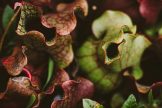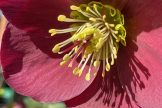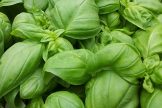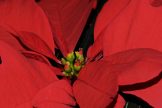
 Important note about plant availability. Important note about plant availability.There are hundreds of factsheets on our website provided for your information. Not all plants will be available at all times throughout the year. To confirm availability please call (03) 8850 3030 and ask for the nursery. |
How to keep them thriving indoors in Melbourne!
Bromeliads belong to a specific plant family, bromeliaceae, which encompasses over 2000 species plus hundreds of hybrids. With one exception all are native to the Americas. The Pineapple is the most familiar Bromeliad. In nature many Bromeliads grow on trees as epiphytes or air plants. Their roots are used mainly for support. They are not parasites. Some Bromeliads grow on trees or in the ground; others grow on rocks and cliff faces. They are remarkably versatile, and form one of the most adaptable plant families in the world. They can offer exciting plant forms, colour combinations, infinite variety and challenge. Bromeliads are divided into groups called genera. The majority of the plants in each genus have the same cultural requirements. There are exceptions, of course.
Different genera require varying amounts of light, water, and humidity. In cultivation the most commonly found genera are: aechmea, billbergia, cryptanthus, dyckia, guzmania, neoregelia, nidularium, tillandsia and vriesea. All make excellent house plants if given a reasonable amount of care.
Potting
For ease of watering in the house, most Bromeliads can be potted, as opposed to mounted on wood or other
material. However, most grey-leaved Tillandsias will not do well potted. Bromeliads will grow in almost any
medium that drains well, does not pack down, provides stability while the root system develops, and has a slightly acid to neutral pH. An all purpose Orchid mix can be used, provided perlite, and/or propagating sand is added to the mix. Orchid bark is also satisfactory, and Bromeliads complement many Orchid collections. Tree fern fibre, small-sized gravel, and matured pine bark, are all good additives if they are available. The important consideration is that the mix MUST drain rapidly. Cryptanthus and Dyckias grow well in African Violet soil. Many African Violet growers find Cryptanthus good companion plants under fluorescent lights. Dyckias also do well in Cactus mix. Cactus fanciers grow Dyckias easily in their collections.
A few good rules to follow are:
-
Don’t pot a Bromeliad too deeply. Plant just to the base of the leaves.
-
Don’t use a pot that is too large as the danger of over watering increases. Usually a 10, 12.5 or 15cm pot is sufficient for a fully grown plant.
-
Don’t allow the plant to rock back and forth, or wiggle; this damages the tender developing roots. Stake the plant, if necessary, until the roots are well developed.
-
Use a fast-draining potting mix. The water should run right through the mix.
-
Always empty the pot saucer. Use a pot with drainage holes in the bottom or sides.
Watering
The roots of most potted Bromeliads like to be moist, but never soggy. Keep the central cup, if there is one, filled with fresh water. Don’t allow the water to get stagnant or the plant will rot. The water should be at room temperature, and should be poured into the centre of the plant, the cup, and allowed to run through the leaves into the mix, so that the roots are moistened. One should do this once a week to flush out the cup. Mist the plant every few days or daily if the house is dry. Softer leaved plants require more water and humidity than stiff leaved ones.
Most Vrieseas, Guzmanias and Midulariums require greater humidity. Mounted plants need frequent misting and
do well with a weekly dousing.
Light
Bright, diffused light is needed by most Bromeliads. Hard, spiny, thick leaved plants, as well as those with grey, grey-green, or silvery leaves, can take bright light for extended periods of time. Soft, thin leaved plants do well in a spot with lowered light intensity, but no Bromeliad likes a dark environment. Nidulariums require the least amount of light and Neoregelias the most. The intense translucent red often seen in Neoregelias cannot be held if grown in the house. The other genera mentioned fall somewhere between these two light requirements.
Symptoms of insufficient light are dark green, often soft, drooping leaves, longer than normal and of poor colour.
Symptoms of too much light are yellowed leaves, markings that are faded and bleached out, a leathery, stressed look to the foliage, and in extreme cases sunburn spots and holes.
Feeding
Opinions vary among growers regarding fertilising. This really depends on the amount and intensity of light the plants are grown in, and on the genus. Many growers never fertilise Neoregelias, or the stiff leaved Aechmeas, and refrain from fertilising any plants during the darker months May through August. There is a consensus that Vrieseas like to be fertilised. Many varieties will not branch well without regular fertilising. The strength of the fertiliser used should not exceed ¼ to ½ of the recommended dosage, if fertiliser is applied once a month. If fertilising more frequently, dilute the fertiliser to an even weaker strength. Slow release pellets such as Osmocote can be added on top of the soil at a dosage of about ¼ teaspoon for a 12.5cm pot every 3 to 4 months. Never fertilise in the cup – this leads to an accumulation of salts that may burn the newly emerging leaves.
Temperature
Bromeliads will be comfortable where you are. Generally, they prosper at temperatures between 10 and 32.5°C. Some are NOT winter hardy except in tropical regions. They prefer temperatures below 37°C but most will tolerate the heat especially if there is good air circulation. Guzmanias are the least tolerant of high temperatures.
Humidity
High humidity and good air circulation are essential. Humidity can be increased in the house by humidifiers,
grouping plants together, misting the area frequently, and setting the pot on rocks, such as scoria in a plant saucer, with water kept below pot level in the saucer. Plastic saucers are better, because clay ones absorb moisture and may mark furniture or floors. Midulariums, Vrieseas, and Guzmanias require the most humidity. Bromeliads, especially those that are mounted, require excellent air circulation, but not draughts.
Artificial Light
Bromeliads grow very successfully under artificial lights. Fluorescent tubes are better than incandescent bulbs because a broader spectrum of light rays can be achieved with more intense light and less heat. There are special tubes for plants, or a combination of a warm white and a cool white is quite effective.
Blooming
Most Bromeliads bloom only once in their lifetime. Plants mature and flower at different ages, depending on their heredity and growing conditions. Some blooms, notably the Billbergias, last only a few days, while others stay attractive for many months. Plants that require lower light levels are easier to bloom in the house than the higher light level plants. Many Bromeliads have such beautiful foliage that blooming is regarded as a bonus, rather than an essential. A change in growing conditions or excessive dryness may initiate blooming in a mature plant.
Offsets
After a plant has bloomed, it will slowly die over the next year or two, but will replace itself with new plants called pups, offsets, or offshoots. Most pups grow from the side of the mother plant at the base. Remove the pups when they are one third to half the size of the mother plant using a sharp knife or clippers; cutting as close as possible to the mother plant without injuring it. If a pup has a long woody stolon, detach a large part of it before mounting, or potting. The top can be twisted (not cut) directly out of the top of a pineapple, hardened for a week or two, and then successfully potted. Cryptanthus, Orthophytums and some Tillandsias have pups further up on the mother plant and their attachment is so fragile that they can be easily plucked off. Always remove any brown leaves before potting a pup, and a dip in Sulphur to prevent fungus is always a good idea. Offsets will usually mature in 1 to 3 years depending on the genus.
Mounting
Bromeliads, except for terrestrials, can be mounted to grow as epiphytes (air plants). Grey leaved Tillandsias are dry growing and prefer mounting. Mallee roots, tree fern, rocks and cork are good bases for mounting, however do not collect these materials from the wild. Use plastic coated wire, staples, various glues, liquid nails or narrow strips of nylon stockings to tie or secure plants. Be careful not to damage the base of the plant. Some Tillandsias never show root attachment. Mounted plants depend on their leaves for moisture and food. Water the entire plant thoroughly at least twice a week, and douse them weekly. Don’t allow water to sit in the leaf axils of fuzzy or grey leaved Tillandsias.





